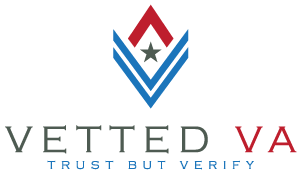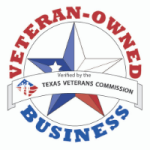Why Paying Off Debt Matters for VA Loan Readiness
Paying down debt isn’t just about peace of mind—it can also make a difference when preparing to qualify for a VA home loan.
The VA Lender’s Handbook (VA Pamphlet 26-7, Chapter 4) explains that lenders must review a borrower’s credit, monthly obligations, and residual income—the amount left over after paying debts and expenses. A high amount of revolving debt or late payments can affect your credit profile and increase your debt-to-income (DTI) ratio, both of which may impact loan approval.
Reducing debt through a clear plan—like the snowball or avalanche method—can help improve your financial readiness and stability before applying.
Understanding the Debt Snowball Method
The snowball method helps you build confidence through quick wins. You start by paying off your smallest balance first, then move to the next smallest, rolling each payment into the next debt as you go.
Steps to follow:
-
List all your debts from smallest to largest balance.
-
Pay the minimum on every debt except the smallest one.
-
Apply any extra money to that smallest balance each month.
-
Once it’s paid off, roll that payment into the next debt on your list.
Example:
Let’s say you have:
-
$5,000 credit card at 17% interest ($200 minimum)
-
$9,000 car loan at 3% ($199 monthly)
-
$12,000 student loan at 4% ($153 monthly)
You’d focus on the credit card first. Once that’s gone, the $200 goes toward the car loan—now you’re paying $399 per month on that debt. After that’s paid, roll $552 into the student loan.
Why it helps veterans:
-
You see fast progress, which helps morale—similar to small wins in basic training.
-
Keeps you focused with a clear, simple plan.
Drawback:
-
You might pay more in interest overall because higher-rate debts remain longer.
Understanding the Debt Avalanche Method
The avalanche method attacks the debt that costs you the most money first—your highest interest rate. This approach saves you money in the long run, though progress may be slower at first.
Steps to follow:
-
List debts from highest to lowest interest rate.
-
Pay the minimum on all others.
-
Apply extra payments to the debt with the highest interest rate.
-
Once that’s gone, move to the next-highest interest rate.
Example:
With the same debts above, your order would be:
-
Credit card (17%)
-
Student loan (4.15%)
-
Car loan (2.95%)
When the credit card is paid, move that payment to the student loan, then the car loan.
Why it helps veterans:
-
Saves money over time by reducing interest costs.
-
Speeds up overall repayment when you stay consistent.
Drawback:
-
Takes longer to see visible results, which may make it harder to stay motivated early on.
Comparing the Two Methods
Both methods can work—but they fit different financial mindsets.
| Factor | Snowball Method | Avalanche Method |
|---|---|---|
| Strategy | Smallest balance first | Highest interest first |
| Motivation | Quick emotional wins | Long-term savings |
| Time to results | Faster emotional progress | Faster total payoff |
| Interest savings | Less efficient | More efficient |
For veterans preparing for a VA loan:
-
The snowball method can help you stay motivated and consistent, improving your payment history, a major credit factor.
-
The avalanche method can help lower your total debt faster, improving your debt-to-income ratio (DTI)—a key VA loan consideration.
There’s no “official” VA rule about which method to use, but both can support your readiness by lowering debt and showing financial discipline.
Staying Financially Ready While Paying Down Debt
While working toward debt freedom, keep your eye on the long-term goal—homeownership readiness. Here’s how to stay financially sharp:
-
Pay on time, every time. Payment history is a major part of your credit score, and the VA lender review looks closely at any late payments (VA Handbook, Chapter 4).
-
Avoid new debt. Opening new accounts or taking out large loans can increase your DTI and reduce residual income.
-
Keep older credit lines open. Once a credit card is paid off, consider keeping it open to maintain a longer credit history.
-
Track your progress. Watching balances drop helps maintain focus and discipline.
Choosing the Method That Fits Your Financial Mission
Think of your debt payoff plan like a mission: success depends on consistent execution.
If you need momentum and motivation, go with the snowball method.
If your goal is to save the most money on interest, try the avalanche method.
Some veterans start with the snowball to build confidence, then switch to the avalanche once they’re in rhythm. Either way, your goal remains the same—lowering debt, improving credit health, and preparing for the financial responsibilities that come with a VA-backed home loan.
Consistency—not perfection—will get you there.





